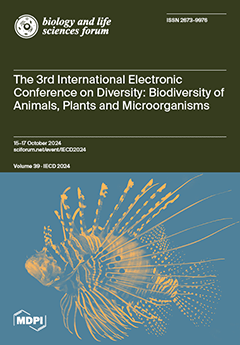Morocco’s rich biodiversity includes various aromatic and medicinal plants utilized for culinary and medicinal purposes. The genus
Mentha, belonging to the Lamiaceae family, is notable for its widespread use in Moroccan culture. This genus encompasses several species with distinct phytochemical profiles, offering
[...] Read more.
Morocco’s rich biodiversity includes various aromatic and medicinal plants utilized for culinary and medicinal purposes. The genus
Mentha, belonging to the Lamiaceae family, is notable for its widespread use in Moroccan culture. This genus encompasses several species with distinct phytochemical profiles, offering potential applications in cosmetics, medicine, and other sectors. However, understanding the innovation landscape related to
Mentha in Morocco requires a comprehensive patent analysis, which can indicate trends, the technological focus, and potential commercial applications. This study identifies the
Mentha species commonly used in Morocco and examines patent documents to reveal technological innovations linked to Moroccan
Mentha species. Five major
Mentha species were identified, namely
M. longifolia,
M. pulegium,
M. gattefossei,
M. spicata, and
M. suaveolens, in addition to two hybrids (
Mentha ×
piperita and
M. rotundifolia). The patent analysis, focusing on the number of documents, jurisdictional distribution, and International Patent Classification (IPC) codes, highlights that China and the United States are leading jurisdictions, with 1113 and 915 patent documents, respectively. The primary IPC code, A61K36/53, corresponds to medicinal preparations containing mint. Among the eight identified species,
M. spicata (spearmint) accounted for the highest patent activity, reflecting its widespread cultivation and use both in Morocco and globally. In contrast,
M. gattefossei (persian mint), an endemic species, had minimal patent representation, suggesting limited international exploitation and potential opportunities for increased research and commercialization focused on this species.
Full article



